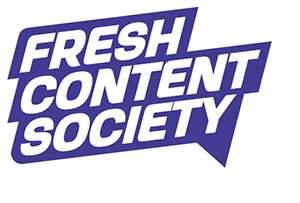Overview
User-Generated Content (UGC) storytelling is crucial for developing a trusted content strategy. By leveraging authentic consumer experiences, brands can foster credibility and engagement. Did you know that 79% of consumers trust UGC more than traditional advertising? This statistic underscores the power of UGC in today’s marketing landscape.
Consider successful UGC initiatives that have significantly boosted brand visibility and consumer confidence. For instance, brands that actively incorporate UGC into their marketing strategies often see enhanced engagement and loyalty from their audience. This approach not only builds trust but also creates a community around the brand.
To harness the full potential of UGC, brands must prioritize it in their content strategies. By doing so, they can tap into the genuine voices of their consumers, creating a more relatable and trustworthy image. The evidence is clear: UGC is not just a trend; it’s a fundamental component of effective marketing.
Introduction
User-generated content (UGC) has emerged as a powerful tool in the digital marketing landscape. It transforms the way brands connect with their audiences, harnessing authentic consumer experiences to build trust and credibility—something traditional advertising often struggles to achieve. Yet, the challenge lies in effectively integrating UGC into a cohesive storytelling strategy that resonates with potential customers.
How can brands master the art of UGC storytelling? This approach not only engages their audience but also drives significant growth and loyalty. By addressing this question, brands can unlock the full potential of UGC, creating meaningful connections that foster lasting relationships.
Understand User-Generated Content (UGC) and Its Importance in Storytelling
User-Generated Content (UGC) is any content created by consumers about a company, including reviews, photos, videos, and social media posts. Why is UGC so crucial? It provides authentic perspectives that resonate deeply with potential customers. Research shows that 79% of consumers trust UGC more than traditional advertising, highlighting its pivotal role in shaping purchasing decisions. Furthermore, 40% of shoppers consider UGC extremely or very important when making purchases, underscoring its influence on consumer behavior.
By emphasizing genuine experiences, companies can build trust and credibility—essential elements in today’s competitive digital landscape. In fact, 82% of consumers are more likely to buy from brands that leverage UGC, showcasing its effectiveness in boosting consumer confidence. Take Fresh Content Society as a prime example: clients like Bob B. from Old World Industries experienced remarkable growth, reaching 500K followers across platforms, while Zach S. from Stern Pinball praised the team’s exceptional service.
Moreover, Fresh Content Society’s strategic community engagement resulted in over 6 million video views for LINE-X in just six months, achieving a staggering 20X return on ad spend (ROAS) within 90 days. To fully harness the potential of UGC, companies must recognize its ability to craft relatable narratives that engage audiences and foster a sense of community. This approach not only enhances loyalty but also cultivates consumer trust, establishing UGC storytelling = trusted content strategy as a fundamental component of effective marketing strategies.
Additionally, employing platform-specific tactics for creating high-retention short-form videos can further amplify engagement and reach. Are you ready to leverage UGC to transform your marketing efforts?

Identify Different Types of UGC for Effective Storytelling
User-generated content (UGC) can be categorized into several types, each serving distinct storytelling functions that can significantly enhance your brand’s narrative:
-
Reviews and Testimonials: These are written feedback from customers that highlight their experiences with a product or service. They can be powerful in building trust. For instance, Cara K. Coleman from Powersports remarked, “Partnering with FCS has proven to be the best decision we made for our social media presence.”
-
Photos and Videos: Visual content produced by users showcasing their interactions with a company. This type of UGC shines on platforms like Instagram and TikTok. Fresh Content Society employs platform-specific strategies to create high-retention short-form videos that resonate with audiences.
-
Social Media Posts: User-generated content that mentions or tags a company, often sharing personal stories or experiences. Zach S. Stern from Pinball noted, “FCS can easily stand for First Class Service based on the working relationship we have had with the team from Fresh Content Society.”
-
Blogs and Articles: Extended pieces produced by users that offer detailed perspectives on their experiences with a company, providing depth and insight.
-
Contests and Challenges: Campaigns that motivate users to generate material centered on a specific theme or product, often incentivized by rewards. Fresh Content Society’s approach to UGC storytelling = trusted content strategy not only builds trust but also encourages engagement and measurable growth. Many companies have experienced significant traction within just 60-90 days.
By acknowledging these categories, companies can strategically integrate them into their UGC storytelling = trusted content strategy initiatives. This ensures a varied and captivating mix that enhances organic reach and fosters a dedicated community. Are you ready to leverage UGC to elevate your brand’s story?
Implement Strategies to Incorporate UGC into Your Content Plan
To effectively incorporate user-generated content (UGC) into your content strategy, consider these key approaches:
-
Set Clear Goals: Establish specific objectives for your UGC initiatives, such as boosting engagement, fostering community, or enhancing visibility. Clear goals guide your campaign direction and help measure success.
-
Launch a UGC Campaign: Encourage users to share their experiences related to your company through a dedicated campaign. Utilize unique hashtags to streamline submissions and track participation.
-
Connect with Your Audience: Actively engage with users who share information about your company. Acknowledging their efforts through likes, comments, or shares fosters a sense of community and encourages further participation. This engagement is crucial for building trust and visibility over time, transforming casual followers into loyal advocates.
-
Curate and Showcase UGC: Regularly highlight user-generated material across your social media platforms, website, and marketing materials. Showcasing community contributions not only validates user experiences but also inspires others to engage. This consistent showcasing strengthens your brand’s authority and creates a lively media ecosystem.
-
Monitor and Analyze Performance: Leverage analytics tools to evaluate the effectiveness of your UGC efforts. Determine which types of material resonate most with your audience and enhance your approach based on these insights. A long-term organic strategy, supported by real-time trend integration and audience research, can lead to measurable engagement and follower growth within 60-90 days.
By applying these approaches, you can establish a dynamic content ecosystem that harnesses the potential of UGC, improving your company’s storytelling and connection with its audience. Successful UGC campaigns have shown that companies can achieve substantial engagement boosts, with initiatives featuring UGC experiencing a 50% rise in interaction rates. As marketing experts highlight, integrating genuine user experiences enhances trust and credibility, making UGC a vital element of contemporary marketing strategies. Notably, UGC influences 79% of buyers’ purchase decisions and can lead to 29% higher web conversions, underscoring its effectiveness in driving consumer behavior.

Adopt Best Practices for Managing and Curating UGC
To manage and curate user-generated content (UGC) effectively, brands must adhere to essential best practices:
- Obtain Permission: Always seek explicit approval before using someone else’s material. This not only respects the creator’s rights but also fosters goodwill and trust within the community.
- Credit Creators: Properly credit original creators when sharing their work. Acknowledging their contributions shows appreciation and encourages further sharing and engagement from others.
- Establish Guidelines: Develop clear guidelines outlining the type of UGC you wish to feature. This guarantees uniformity in messaging and preserves the quality of information shared.
- Moderate Content: Regularly review UGC submissions to ensure they align with your values and community standards. Remove any content that may be considered inappropriate or harmful to maintain a positive company image.
- Engage with Contributors: Build a sense of community by actively engaging with users who contribute UGC. Respond to their comments and encourage ongoing participation, leading to a more vibrant and loyal audience.
By implementing these best practices, companies can effectively leverage the power of UGC, enhancing authenticity and fostering a loyal community. Research shows that 62% of consumers believe UGC improves brand authenticity, making it an essential element of contemporary marketing approaches. As highlighted by clients such as Cara K. Coleman from Powersports, “Collaborating with Fresh Content Society has proven to be the best choice we made for our social media presence,” illustrating the tangible advantages of a well-executed UGC approach. Additionally, incorporating short-form videos can significantly boost engagement, aligning with insights from Fresh Content Society on effective content creation strategies.

Conclusion
User-generated content (UGC) stands as a cornerstone of effective storytelling in marketing, fundamentally transforming how brands connect with their audiences. By leveraging authentic consumer experiences, companies can foster trust and credibility—essential elements in a landscape saturated with traditional advertising. UGC not only influences purchasing decisions but also enhances brand loyalty, making it an indispensable part of a successful content strategy.
This article explores various types of UGC, including:
- Reviews
- Visual content
- Social media posts
Each plays a unique role in crafting engaging narratives. It highlights the importance of implementing strategic approaches, such as:
- Setting clear goals
- Launching dedicated campaigns
- Actively engaging with contributors
By showcasing user-generated content, brands can cultivate a vibrant community that amplifies their message and boosts visibility.
Ultimately, embracing UGC transcends mere marketing enhancement; it’s about forging meaningful connections with consumers. As brands navigate the complexities of digital marketing, the insights shared underscore the significance of integrating UGC into their strategies. Companies are urged to adopt best practices in managing and curating this content, ensuring they respect creators while cultivating a loyal audience. The call to action is clear: harness the power of UGC to elevate brand stories and drive engagement, fundamentally transforming how businesses relate to their customers.
Frequently Asked Questions
What is User-Generated Content (UGC)?
User-Generated Content (UGC) refers to any content created by consumers about a company, including reviews, photos, videos, and social media posts.
Why is UGC important in storytelling?
UGC is crucial because it provides authentic perspectives that resonate with potential customers, helping to build trust and credibility in a competitive digital landscape.
How does UGC influence consumer behavior?
Research indicates that 79% of consumers trust UGC more than traditional advertising, and 40% consider it extremely or very important when making purchasing decisions.
What impact does UGC have on brand loyalty?
By emphasizing genuine experiences through UGC, companies can enhance loyalty and cultivate consumer trust, making it a vital part of effective marketing strategies.
Can you provide an example of successful UGC implementation?
Fresh Content Society is an example where clients experienced significant growth, such as Bob B. from Old World Industries reaching 500K followers and Zach S. from Stern Pinball praising their exceptional service.
What results did Fresh Content Society achieve through UGC?
Fresh Content Society’s community engagement led to over 6 million video views for LINE-X in six months and a 20X return on ad spend (ROAS) within 90 days.
How can companies effectively use UGC in their marketing strategies?
Companies can harness UGC by crafting relatable narratives that engage audiences and foster a sense of community, which is essential for building trust and enhancing consumer confidence.
What specific tactics can be employed to maximize UGC engagement?
Employing platform-specific tactics for creating high-retention short-form videos can amplify engagement and reach.

